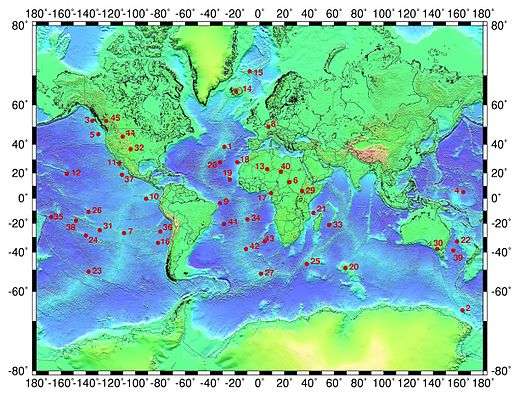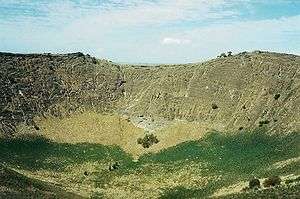East Australia hotspot
The East Australia hotspot is a volcanic hotspot that forces magma up at weak spots in the Indo-Australian Plate to form volcanoes in Eastern Australia. It does not produce a single chain of volcanoes like the Hawaiian Islands.[1] Unlike most hotspots, the East Australia hotspot has explosive eruptions, as well as the runny lava flows of the Hawaii hotspot, the Iceland hotspot and the Réunion hotspot. The hotspot is explosive because basaltic magma interacts with groundwater in aquifers below the surface producing violent phreatomagmatic eruptions.


Tweed Volcano in New South Wales is a large shield volcano that was formed by the hotspot about 23 million years ago and has one of the biggest erosion calderas in the world.
A number of the volcanoes in the province have erupted since Aboriginal settlement (46,000 BP). The most recent eruptions were about 5,600 years ago, and memories of them survive in Aboriginal folklore. These eruptions formed the volcanoes Mount Schank and Mount Gambier in the Newer Volcanics Province. There have been no eruptions on the Australian mainland since European settlement.
See also
References
- "Volcanoes of Australia". Volcano World, Department of Geosciences at Oregon State University. Retrieved 24 January 2010.